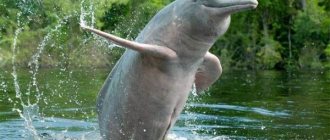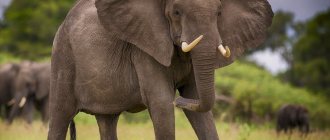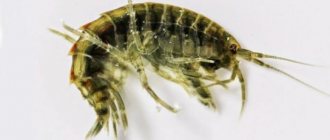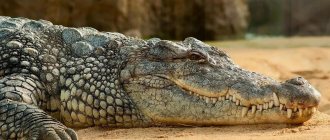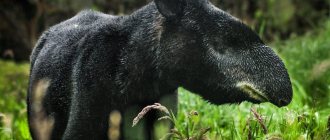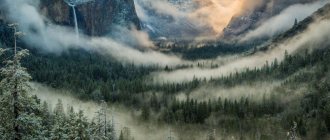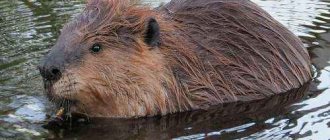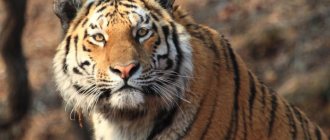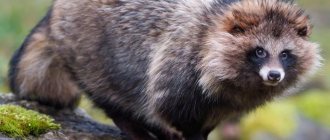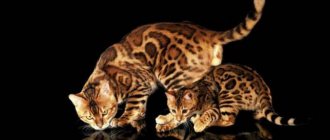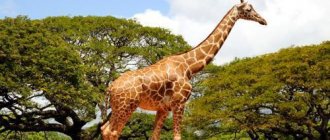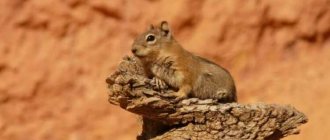The natural conditions of Eurasia are difficult: the unique structure of the relief, a wide variety of temperatures - all this influenced the fauna of the continent, making it unique. The animals of Eurasia are diverse and highly differentiated. The European part is home to large mammals: bears, roe deer, and deer. In the reed hollows of Asia, in the mountain forests, you can find Himalayan bears, pandas, and leopards. Other species of animals are also common in the area.
List
What animals live in Eurasia and what is the local fauna like? The animal world here is diverse. In these places you can find a variety of representatives of the animal world. Among them:
- Fox.
- Wolf.
- Harvest mouse.
- Bison
- Yak.
- Deer, elk.
- Cormorant, tit.
- Brown bear.
- Varan.
- Snow Leopard.
- Goat.
- Mouflon.
- Tapir.
- Gaur.
- White hare.
- Sable.
- Mantis.
- Podalirium.
- Gibbon.
- Flying frog.
Also on the territory of Eurasia you can find a crocodile, goose, wood grouse, peacock, pheasant, Danaid, turtle, crane, swan, orangutan, walrus, panda and other representatives of the animal world.
Forest-steppe and steppe
As you move from west to east of the continent, the climate changes significantly. Warm weather and lack of sufficient moisture formed fertile black soils and forest soils. The flora becomes poorer, the forest becomes sparse, consisting of birch, linden, oak, maple, alder, willow, and elm. In the eastern part of the mainland, the soils are saline; only grasses and shrubs are found.
However, in spring, the steppe expanses are simply pleasing to the eye: the plants of Eurasia wake up. Multi-colored carpets of violets, tulips, sage, and irises are spread over many kilometers.
With the arrival of warmth, the fauna also becomes active. It is represented here by steppe birds, ground squirrels, voles, jerboas, foxes, wolves, and saigas.
It is worth noting that most of this natural area is used for agriculture. The natural fauna has been preserved for the most part in places not suitable for arable land.
Foxes
Among the animals of Eurasia there are representatives of the wolf genus: foxes, wolves.
Red-haired sneaks are very cunning and skillful hunters, capable of tracking their prey by following its tracks. Most often they hunt hares and mice. Foxes have excellent hearing.
Red creatures live in forests and open areas, most often they are found near human settlements. These representatives of the animals of Eurasia are distributed throughout the entire continent. Their body sizes reach up to 85 cm.
Foxes can feed not only on mice and hares, but also on worms, insects, carrion, and eat various garbage and fruits.
Fauna of the eastern continent
The fauna of Asia includes all animals inhabiting its territory and the adjacent seas and islands. Names and brief descriptions of amazing fauna representatives:
- The Bengal cat is a beautiful and very common animal. Found in Korea, China, Thailand, North Vietnam, the Philippine Islands, etc. Animals easily climb trees, swim well, but avoid moving in water. Their body length ranges from 75 to 100 cm, tail - up to 40 cm, weight reaches 7 kg. A wild cat has long legs, a bushy tail, and a small head. Large ears without tassels are not set wide. The lush, thick coat is yellow or grayish-brown. Black or reddish-brown spots clearly stand out on it. The Bengal cat often hunts at night: voles, mice, squirrels, birds. Sometimes the victims are hares, young roe deer and other animals that the beast can handle.
- The snow leopard (irbis) is found in the highlands of Central and Central Asia (Altai, Tibet, Hindu Kush, Himalayas), on the boundary of eternal snow, where the altitude reaches 2000-3000 meters above sea level. Well adapted to local harsh conditions. The predator hunts various small and large animals, mainly mountain artiodactyls. Snow leopards live in pairs. In the cave, the female insulates the den with wool, and then brings from 2 to 4 cubs. When seeing a person, the animal does not show aggression, behaves calmly and even trustingly. Thick fur of a unique color has always attracted hunters, so the number of these beautiful cats is rapidly declining.
- The giant panda, or bamboo bear, is a species of mammal from the bear family. Lives in the mountains of Southern China. This is a large animal, from 1.2 to 1.8 m long, weighing from 17 to 160 kg. Males are much larger than females. Leads a lonely lifestyle. Only during the birth and upbringing of babies do pandas unite in pairs. Cubs are born once a year. The appearance of the bamboo bear is very attractive and unusual. The body is covered with white fluffy fur, and the paws, ears, and circles around the eyes are black. A picture on the Internet depicting a cute and kind-looking animal involuntarily makes you smile.
The panda's main diet consists of bamboo and its shoots. Interesting fact: an adult eats about 20 kg of this “delicacy” per day. A panda can sit in one place for hours and leisurely chew bamboo.
Mice
Another representative of the fauna is the field mouse. These little creatures are busy eating all day long. The mouse lives in open areas, most often settling among cereal plants, the grains of which it feeds on.
Mice are great at climbing trees in search of tasty leaves and fruits. They nest underground.
The field mouse is found in the forests and fields of Eurasia. The mouse feeds on fruits, buds, and seeds.
Ecological situation
Over the last century, human economic activity has acquired catastrophic proportions:
- river beds change,
- swamps are drained,
- Huge areas of forests are being cut down,
- the terrain changes,
- water, soil and atmosphere are polluted by industrial and household waste.
Just a century ago, 32% of the land was covered by forests. Now it’s only about 20%. Hundreds of animal species and thousands of plant species have disappeared from the face of the earth or are on the verge of extinction. But the disappearance of one species often leads to the destruction of food chains, and therefore threatens the existence of other living beings and the destruction of the ecosystem as a whole.
The process cannot be stopped. But every person living on this planet needs to be aware of the value of every living being, try not to damage nature with their actions, and take a position of reasonable consumption.
Deer
What other animals live in Eurasia and where can they be found? One of the most beautiful representatives is the deer. This is a nocturnal animal that rests during the day and is awake at night. In summer, its skin becomes variegated. Male deer have large antlers, while females have small ones.
Deer are found in the deciduous forests of Eurasia. They feed on grass, berries, and acorns.
Endangered species
Unfortunately, the development of civilization constantly causes great damage to nature, which has caused the threat of extinction of many animal species. Such representatives of the fauna living in Eurasia are listed in the Red Book . Briefly about them:
- The Przewalski's horse is the only wild horse in nature. Initially it lived in European steppes and semi-deserts, as well as in the territories of Mongolia and China, but then disappeared. A program to release animals born in zoos into the wild is now being successfully implemented. Today the number of the species is about 2 thousand individuals. The Przewalski's horse is a very hardy animal, endowed with well-developed muscles. Quickly increases speed. Makes big jumps, pushing off strongly from the ground. The horse is painted in a camouflage sand color, but the tail, mane (short erect) and legs are black with a brown tint; a dark stripe runs along the ridge on the back. The “bangs” characteristic of other types of horses are absent in this species. It differs from domestic horses in its small size: body length up to 2.8 m, height at the withers - 1.2-1.4 m, weight about 300 kg.
- The Sumatran rhinoceros is the smallest of all species and the only Asian rhinoceros with two horns. Over the past 15 years, only a few cubs have been born in captivity. Now their number is approximately 100 individuals. Previously, they inhabited the foothills of the Eastern Himalayas and were found in Thailand and China. The animal has a powerful build: length - 2-3 m, height at the withers - up to 1.5 m, weight - from 600 to 1000 kg. The body is covered with sparse bristly fur of a reddish-brown color. The anterior horn of males is quite large (up to 45 cm), while that of females is shorter. The posterior horn looks like a protrusion. Rhinoceroses inhabit tropical rainforests. They are active at night and at dusk.
- The pygmy pig is the smallest species of the family. It lives at the foot and on the southern slopes of the Himalayas. The size is no larger than a hare: the length of the body reaches 50-65 cm, the height at the withers is 25-30 cm. It differs from other types of pigs in its skull - the long head smoothly turns into the body. The color is uniform gray-brown, with tufts of light stubble on the cheeks. Dwarf pigs live in small herds. They feed on succulent rhizomes of plants, sometimes insects and small animals.
For a long time, dwarf pigs were intensively hunted, and their habitats were destroyed. As a result of such vigorous activity, the species was on the verge of extinction.
Yak
According to the description, the animals of Eurasia are unique creatures, many species of which live high in the Tibetan mountains, among the eternal snows. These animals have long hair that hangs from the sides and is somewhat reminiscent of a skirt. The cold is not scary for the animal.
The yak feeds on plants that it gets from under the snow. It grazes at night and sleeps during the day.
The yaks protect the calves by standing in a circle around them. Animals have a good sense of smell, and it is much better developed than hearing and vision.
Fauna of the Central Asian highlands
Representatives of the Central Asian subregion and the Ethiopian region of Africa live in the Western Asian Highlands. Here you can find gazelles, antelopes, wild donkeys, Central Asian mountain sheep and goats, hyraxes, leopards, lynx, caracal, jackal, hyena, some species of foxes, hares, jerboas, gerbils, and one species of porcupine. Among the bird species that live here are bustards, hazel grouses, larks, desert jays, and near water bodies - herons, flamingos, and pelicans. The variety of reptiles and arthropods here is very great.
Brown bear
The brown bear is widespread in Asia and Europe. The animal is large, up to three meters tall. Lives in deep forests.
Bears eat berries, nuts, fish, insects, and love honey. In the summer, animals can spend the night anywhere, but they spend the winter in a den. The offspring are born there - 2-3 bear cubs at a time, and the offspring appear once every two years.
Interesting Facts
There are about 390,000 plant species in the world.
Interesting facts about plants of Eurasia:
- Bamboo is the fastest growing plant on earth. It grows in Southeast Asia. Its growth per day is from 0.7 to 0.9 m.
- The largest flower on the planet is Rafflesia Arnoldi. Grows in the jungles of Malaysia. Its diameter is 1 m and its weight is 7 kg.
- The smallest plant on earth is duckweed.
- There is a lichen in Antarctica that is 10,000 years old.
- Plants such as butterwort, sundew, and Venus flytrap are predatory plants. They eat insects.
- The world's largest orchid is the tiger orchid. Its inflorescences reach 3 m. And the smallest flower is 2 mm.
- One of the most durable trees on earth is the Far Eastern birch. Its strength is 1.5 times higher than cast iron.
Saiga antelope
These unusual representatives of the fauna of Eurasia are somewhat similar to a sheep on thin legs. Saigas have a swollen muzzle, with a proboscis nose that hangs over the mouth.
Animals eat grass. They are very fast - in open areas they move as well as a car. When running, the head is lowered low, almost touching the ground. If there are ditches on the way, they dashingly jump over them.
Saigas gather from the herd. Females give birth to 1-2 cubs. At first they lie on the ground, merging with it. Because of this feature, newborns are difficult to notice.
Fauna of the Indo-Malayan zoogeographic region
The fauna of this area has a pronounced tropical character. Numerous species of ungulates (tapir, rhinoceroses, buffalo, muntjac deer), predators (Malayan short-haired bear, tiger), and monkeys (orangutans, macaques) are represented here. These areas are characterized by a variety of “gliding animals” - flying squirrels and woolly wings, flying dragons.
Typical avifauna include argus, blue-winged peacocks, birds of paradise and big-footed chickens. Many reptiles live here, including the world's largest Komodo dragon, the gharial crocodile, and numerous snakes. The diversity of arthropods, especially spiders and butterflies, in the tropical fauna of Eurasia is also high.
Among the various arthropods, large and brightly colored butterflies are especially significant. Scorpions and huge tarantula spiders are also common.
Equatorial rainforests
They occupy most of the Pacific Ocean from the Southeast, as well as Hindustan. These are regions very rich in vegetation with fertile soils - even there are more than 3 hundred species of palm trees here! Coconut palms and bamboos of all kinds also grow here.
Permanent moist equatorial forests are located on the islands of the Indian Ocean; evergreen vines, ferns, and many southern flowers grow here. The fauna of the regions is also rich in monkeys, wild cats, and elephants.
Geological characteristics
Structure
17 Animal Hybrids That Actually Exist
Geological Structures of the Earth
The geological structure of Eurasia is qualitatively different from the structures of other continents. Eurasia is composed of several platforms and plates. The continent was formed in the Mesozoic and Cenozoic eras and is the youngest in geological terms. This distinguishes it from other continents, which are highlands of ancient platforms formed billions of years ago.
The northern part of Eurasia is a series of plates and platforms formed during the Archean, Proterozoic and Paleozoic periods: the East European platform with the Baltic and Ukrainian shields, the Siberian platform with the Aldan shield, the West Siberian plate. The eastern part of the continent includes two platforms (Chinese-Korean and South China), some plates and areas of Mesozoic and Alpine folding. The southeastern part of the continent represents areas of Mesozoic and Cenozoic folding. The southern regions of the continent are represented by the Indian and Arabian platforms, the Iranian plate, as well as areas of Alpine and Mesozoic folding, which prevail in southern Europe. The territory of Western Europe includes zones of predominantly Hercynian folding and plates of Paleozoic platforms. The central regions of the continent include zones of Paleozoic folding and plates of the Paleozoic platform.
In Eurasia there are many large faults and cracks, which are found in Siberia (Western and Lake Baikal), Tibet and some other areas.
Story
Main article - History of Eurasia
The period of formation of the continent covers a huge period of time and continues today. The process of formation of the ancient platforms that make up the continent of Eurasia began in the Precambrian era. Then three ancient platforms were formed: Chinese, Siberian and East European, separated by ancient seas and oceans. At the end of the Proterozoic and in the Paleozoic, processes of closing the oceans that separated the land masses took place. At this time, the process of land growth around these and other platforms and their grouping took place, which ultimately led to the formation of the supercontinent Pangea by the beginning of the Mesozoic era.
In the Proterozoic, the process of formation of the ancient platforms of Eurasia - Siberian, Chinese and East European - took place. At the end of the era, the land area south of the Siberian Platform increased. In the Silurian, extensive mountain building occurred as a result of the connection of the European and North American platforms, forming the large North Atlantic continent. In the east, the Siberian Platform and a number of mountain systems united, forming a new continent - Angaris. At this time, the process of formation of ore deposits took place.
During the Carboniferous period, a new tectonic cycle began. Intense movements led to the formation of mountainous areas that connected Siberia and Europe. Similar mountainous regions also formed in the southern regions of modern Eurasia. Before the start of the Triassic period, all the ancient platforms were grouped and formed the continent of Pangea. This cycle was long and divided into phases. In the initial phase, mountain building took place in the southern territories of what is now Western Europe and in the regions of central Asia. During the Permian period, new major mountain-building processes took place, in parallel with the general uplift of the land. As a result, by the end of the period, the Eurasian part of Pangea was a region with major folding. At this time, the process of destruction of old mountains and the formation of thick sedimentary deposits took place. In the Triassic period, geological activity was weak, but during this period the Tethys Ocean gradually opened in the east of Pangea, which later in the Jurassic divided Pangea into two parts: Laurasia and Gondwana. In the Jurassic period, the process of orogenesis begins, the peak of which, however, occurred in the Cenozoic era.
The next stage in the formation of the continent began in the Cretaceous period, when the Atlantic Ocean began to open. The continent of Laurasia finally divided in the Cenozoic.
At the beginning of the Cenozoic era, northern Eurasia represented a huge landmass that made up ancient platforms connected by the Baikal, Hercynian and Caledonian folds. In the east and southeast, this massif is adjacent to areas of Mesozoic folding. In the west, Eurasia was already separated from North America by the narrow Atlantic Ocean. From the south, this huge massif was supported by the Tethys Ocean, which had shrunk in size. In the Cenozoic, there was a reduction in the area of the Tethys Ocean and intense mountain building in the south of the continent. By the end of the Tertiary period, the continent took on its modern shape.
